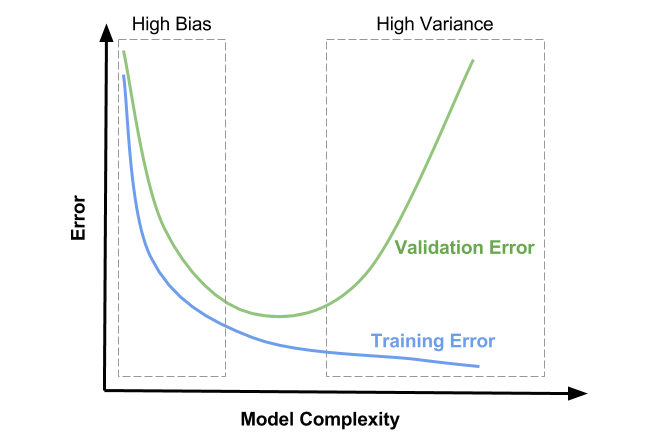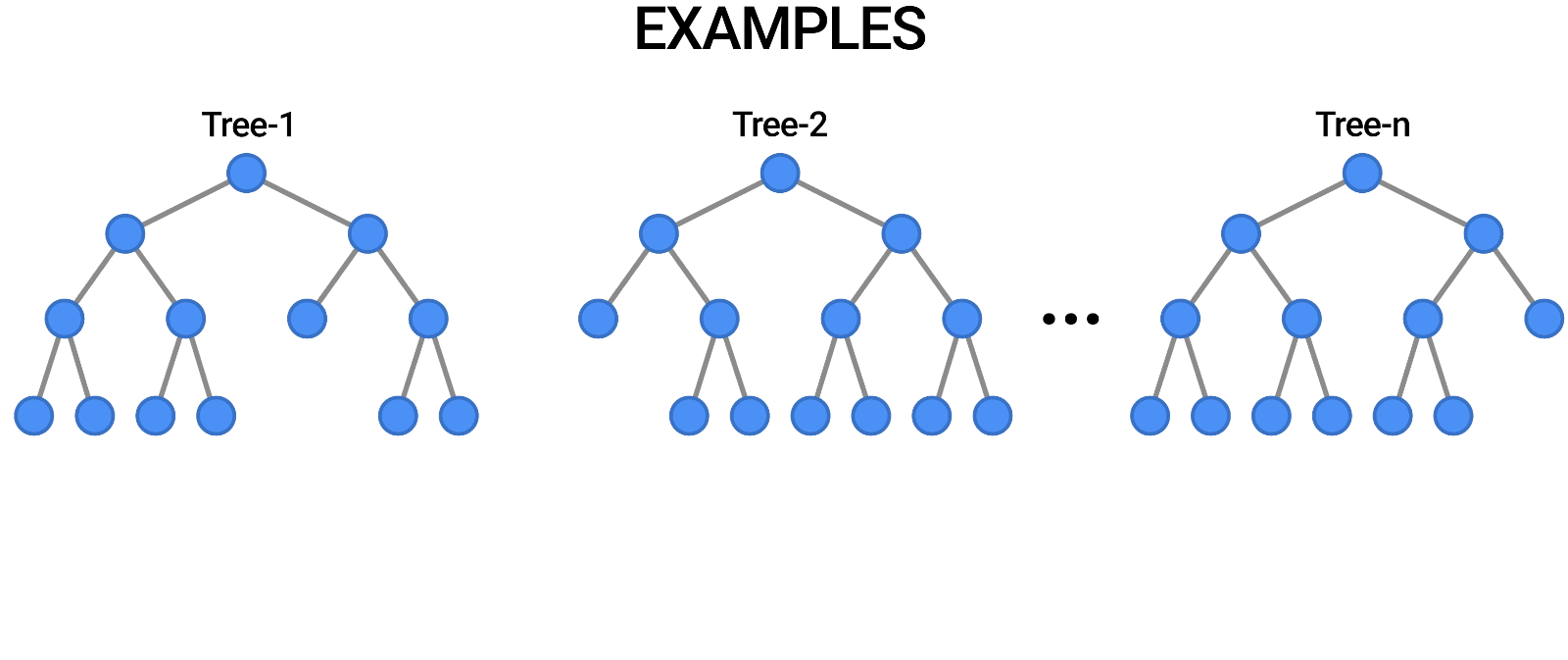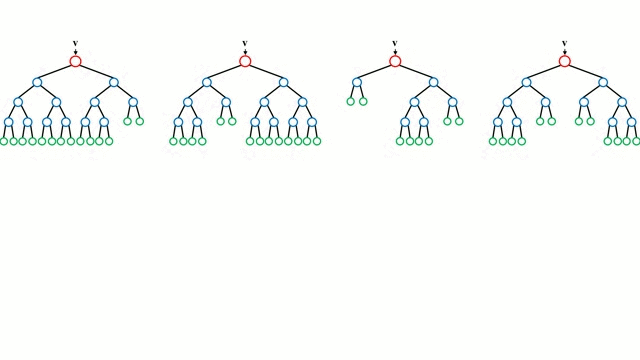Decision Trees and Random Forest
- Training Validation and Test Sets
- Input and Target Columns
- Imputing Missing Numeric Values
- Scaling Numeric Features
- Encoding Categorical Data
- Training and Visualizing Decision Trees
- Hyperparameter Tuning and Overfitting
- Random Forest with Ausstralia Rain Dataset
- Hyperparameter Tuning with Random Forests
- Making Predictions on New Inputs
import opendatasets as od
import numpy as np
import pandas as pd
import matplotlib
import matplotlib.pyplot as plt
import seaborn as sns
import os
%matplotlib inline
pd.set_option('display.max_columns', None)
pd.set_option('display.max_rows', 150)
sns.set_style('darkgrid')
matplotlib.rcParams['font.size'] = 14
matplotlib.rcParams['figure.figsize'] = (10, 6)
matplotlib.rcParams['figure.facecolor'] = '#00000000'
os.listdir('weather-dataset-rattle-package')
raw_df = pd.read_csv('weather-dataset-rattle-package/weatherAUS.csv')
raw_df.head(10)
raw_df.shape
raw_df.info() # to check column types of dataset
raw_df.dropna(subset=['RainTomorrow'], inplace=True)
raw_df.head(2)
raw_df.shape # shape has become 142193
plt.title("no.of Rows per Year")
sns.countplot(x=pd.to_datetime(raw_df.Date).dt.year);
year = pd.to_datetime(raw_df.Date).dt.year
train_df = raw_df[year<2015]
val_df = raw_df[year==2015]
test_df = raw_df[year>2015]
print(train_df.shape, val_df.shape, test_df.shape)
input_cols = list(train_df.columns)[1:-1]
target_cols = 'RainTomorrow'
target_cols
input_cols
train_inputs = train_df[input_cols].copy()
train_targets = train_df[target_cols].copy()
val_inputs = val_df[input_cols].copy()
val_targets = val_df[target_cols].copy()
test_inputs = test_df[input_cols].copy()
test_targets = test_df[target_cols].copy()
numeric_cols = train_inputs.select_dtypes(include=np.number).columns.tolist()
categorical_cols = train_inputs.select_dtypes('object').columns.tolist()
print(numeric_cols)
print(categorical_cols)
train_inputs[numeric_cols].isna().sum().sort_values(ascending=False)
from sklearn.impute import SimpleImputer
imputer = SimpleImputer(strategy = 'mean').fit(raw_df[numeric_cols]) # imputer will figureout the avg for each of cols
train_inputs[numeric_cols] = imputer.transform(train_inputs[numeric_cols]) # fill empty data
val_inputs[numeric_cols] = imputer.transform(val_inputs[numeric_cols])
test_inputs[numeric_cols] = imputer.transform(test_inputs[numeric_cols])
train_inputs[numeric_cols].isna().sum()
from sklearn.preprocessing import MinMaxScaler
val_inputs.describe().loc[['min', 'max']]
scaler = MinMaxScaler().fit(raw_df[numeric_cols])
train_inputs[numeric_cols] = scaler.transform(train_inputs[numeric_cols])
val_inputs[numeric_cols] = scaler.transform(val_inputs[numeric_cols])
test_inputs[numeric_cols] = scaler.transform(test_inputs[numeric_cols])
val_inputs.describe().loc[['min', 'max']]
from sklearn.preprocessing import OneHotEncoder
train_df[categorical_cols].fillna('Unkown')
val_df[categorical_cols].fillna('Unkown')
test_df[categorical_cols].fillna('Unknown')
encoder = OneHotEncoder(sparse=False, handle_unknown='ignore').fit(raw_df[categorical_cols])
encoded_cols = list(encoder.get_feature_names(categorical_cols))
train_inputs[encoded_cols] = encoder.transform(train_inputs[categorical_cols])
val_inputs[encoded_cols] = encoder.transform(val_inputs[categorical_cols])
test_inputs[encoded_cols] = encoder.transform(test_inputs[categorical_cols])
print(encoded_cols)
train_inputs.head(10)
X_train = train_inputs[numeric_cols + encoded_cols]
X_val = val_inputs[numeric_cols + encoded_cols]
X_test = test_inputs[numeric_cols + encoded_cols]
X_test.head(10)
from sklearn.tree import DecisionTreeClassifier
model = DecisionTreeClassifier(random_state=42) # random state is provided to get same value each time
%%time
model.fit(X_train, train_targets)
from sklearn.metrics import accuracy_score, confusion_matrix
train_preds = model.predict(X_train)
train_preds
pd.value_counts(train_preds)
Decision tree also returns probabilities of each prediction
train_probs = model.predict_proba(X_train)
train_probs
train_targets
accuracy_score(train_preds, train_targets)
model.score(X_val, val_targets) # direct prediction on val inputs and compare accuracy
#only ~79%
val_targets.value_counts() / len(val_targets)
It appears that the model has learned the training examples perfect, and doesn't generalize well to previously unseen examples. This phenomenon is called "overfitting", and reducing overfitting is one of the most important parts of any machine learning project.
from sklearn.tree import plot_tree, export_text
plt.figure(figsize=(80, 40))
plot_tree(model, feature_names=X_train.columns, max_depth=2, filled=True)
How a Decision Tree is Created
Note the gini value in each box. This is the loss function used by the decision tree to decide which column should be used for splitting the data, and at what point the column should be split. A lower Gini index indicates a better split. A perfect split (only one class on each side) has a Gini index of 0.
For a mathematical discussion of the Gini Index, watch this video: It has the following formula:

Conceptually speaking, while training the models evaluates all possible splits across all possible columns and picks the best one. Then, it recursively performs an optimal split for the two portions. In practice, however, it's very inefficient to check all possible splits, so the model uses a heuristic (predefined strategy) combined with some randomization.
Let's check the depth of the tree that was created.
model.tree_.max_depth
tree_text = export_text(model, max_depth=10, feature_names=list(X_train.columns))
print(tree_text[:5000])
X_train.columns
model.feature_importances_
importance_df = pd.DataFrame({
'feature': X_train.columns,
'importance': model.feature_importances_
}).sort_values('importance', ascending=False)
importance_df.head(10)
plt.title('Feature Importance')
sns.barplot(data=importance_df.head(10), x='importance', y='feature');
?DecisionTreeClassifier
As we saw in the previous section, our decision tree classifier memorized all training examples, leading to a 100% training accuracy, while the validation accuracy was only marginally better than a dumb baseline model. This phenomenon is called overfitting, and in this section, we'll look at some strategies for reducing overfitting. The process of reducing overfitting is known as regularlization.
The DecisionTreeClassifier accepts several arguments, some of which can be modified to reduce overfitting.
These arguments are called hyperparameters because they must be configured manually (as opposed to the parameters within the model which are learned from the data. We'll explore a couple of hyperparameters:
max_depthmax_leaf_nodes
By reducing the maximum depth of the decision tree, we can prevent the tree from memorizing all training examples, which may lead to better generalization
model = DecisionTreeClassifier(max_depth=3, random_state=42)
model.fit(X_train, train_targets)
model.score(X_train, train_targets)
model.score(X_val, val_targets)
model.classes_
Great, while the training accuracy of the model has gone down, the validation accuracy of the model has increased significantly.
plt.figure(figsize=(80, 40))
plot_tree(model, feature_names=X_train.columns, filled=True, rounded=True, class_names=model.classes_)
print(export_text(model, feature_names=list(X_train.columns)))
def max_depth_error(md):
model = DecisionTreeClassifier(max_depth=md, random_state=42)
model.fit(X_train, train_targets)
train_error = 1 - model.score(X_train, train_targets)
val_error = 1 - model.score(X_val, val_targets)
return {'Max Depth': md, 'Training Error': train_error, 'Validation Error': val_error}
%%time
errors_df = pd.DataFrame([max_depth_error(md) for md in range(1, 21)])
errors_df
plt.figure()
plt.plot(errors_df['Max Depth'], errors_df['Training Error'])
plt.plot(errors_df['Max Depth'], errors_df['Validation Error'])
plt.title("Training vs Validation Error")
plt.xticks(range(0,21,2))
plt.xlabel('Max. Depth')
plt.ylabel('Prediction Error ie 1-Accuracy')
plt.legend(['Training', 'Validation'])

So for us max depth of 7 results in lowest validation error
model = DecisionTreeClassifier(max_depth=7, random_state=42).fit(X_train, train_targets)
model.score(X_val, val_targets), model.score(X_train, train_targets)
Another way to control the size of complexity of a decision tree is to limit the number of leaf nodes. This allows branches of the tree to have varying depths.
model = DecisionTreeClassifier(max_leaf_nodes = 128, random_state = 42)
model.fit(X_train, train_targets)
model.score(X_train, train_targets)
model.score(X_val, val_targets)
model.tree_.max_depth
Notice that the model was able to achieve a greater depth of 12 for certain paths while keeping other paths shorter.
model_text = export_text(model, feature_names = list(X_train.columns))
print(model_text[:3000])
While tuning the hyperparameters of a single decision tree may lead to some improvements, a much more effective strategy is to combine the results of several decision trees trained with slightly different parameters. This is called a random forest model.
The key idea here is that each decision tree in the forest will make different kinds of errors, and upon averaging, many of their errors will cancel out.
A random forest works by averaging/combining the results of several decision trees:


We'll use the RandomForestClassifier class from sklearn.ensemble.
from sklearn.ensemble import RandomForestClassifier
model = RandomForestClassifier(n_jobs = -1, random_state=42) # n_jobs= -1 to train in parallel
%%time
model.fit(X_train, train_targets)
model.score(X_train, train_targets)
model.score(X_val, val_targets)
Once again, the training accuracy is almost 100%, but this time the validation accuracy is much better. In fact, it is better than the best single decision tree we had trained so far. Do you see the power of random forests?
This general technique of combining the results of many models is called "ensembling", it works because most errors of individual models cancel out on averaging. Here's what it looks like visually:

We can also look at the probabilities for the predictions. The probability of a class is simply the fraction of trees which that predicted the given class.
train_probs = model.predict_proba(X_train)
train_preds
train_probs
model.estimators_[0]
len(model.estimators_)
plt.figure(figsize=(80,40))
plot_tree(model.estimators_[0], max_depth=2, feature_names=X_train.columns, filled=True, class_names=model.classes_)
plt.figure(figsize=(80,40))
plot_tree(model.estimators_[40], max_depth=2, feature_names=X_train.columns, filled=True, class_names=model.classes_)
Random forest also assign importance to each feature, by combining the importance values from individual trees
imortance_df = pd.DataFrame({
'feature': X_train.columns,
'importance': model.feature_importances_
}).sort_values('importance', ascending=False)
importance_df.head(10)
plt.title('importance of features')
sns.barplot(data=importance_df.head(10), x='importance', y='feature')
?RandomForestClassifier
base_model = RandomForestClassifier(random_state=42, n_jobs=-1).fit(X_train, train_targets)
base_train_acc = base_model.score(X_train, train_targets)
base_train_acc
base_val_acc = base_model.score(X_val, val_targets)
base_val_acc
base_accs = base_train_acc, base_val_acc
This argument controls the number of decision trees in the random forest. The default value is 100. For larger datasets, it helps to have a greater number of estimators. As a general rule, try to have as few estimators as needed.
model = RandomForestClassifier(random_state=42, n_jobs=-1, n_estimators=10)
model.fit(X_train, train_targets)
model.score(X_train, train_targets), model.score(X_val, val_targets)
base_accs
model = RandomForestClassifier(random_state=42, n_jobs=-1, n_estimators=500)
model.fit(X_train, train_targets)
model.score(X_train, train_targets), model.score(X_val, val_targets)
base_accs
max_depth and max_leaf_nodes
These arguments are passed directly to each decision tree, and control the maximum depth and max. no leaf nodes of each tree respectively. By default, no maximum depth is specified, which is why each tree has a training accuracy of 100%. You can specify a max_depth to reduce overfitting.

Let's define a helper function test_params to make it easy to test hyperparameters.
def test_params(**params):
model = RandomForestClassifier(random_state=42, n_jobs=-1, **params).fit(X_train, train_targets)
return model.score(X_train, train_targets), model.score(X_val, val_targets)
test_params(max_depth=5, max_leaf_nodes=1024, n_estimators=1000)
test_params(max_depth=26)
test_params(max_leaf_nodes=2**5)
test_params(max_leaf_nodes=2**20)
base_accs
Instead of picking all features (columns) for every split, we can specify that only a fraction of features be chosen randomly to figure out a split.

Notice that the default value auto causes only $\sqrt{n}$ out of total features ( $n$ ) to be chosen randomly at each split. This is the reason each decision tree in the forest is different. While it may seem counterintuitive, choosing all features for every split of every tree will lead to identical trees, so the random forest will not generalize well.
test_params(max_features='log2')
test_params(max_features=3)
test_params(max_features=20)
base_accs
By default, the decision tree classifier tries to split every node that has 2 or more. You can increase the values of these arguments to change this behavior and reduce overfitting, especially for very large datasets.
test_params(min_samples_split=3, min_samples_leaf=2)
test_params(min_samples_split=100, min_samples_leaf=60)
base_accs
This argument is used to control the threshold for splitting nodes. A node will be split if this split induces a decrease of the impurity (Gini index) greater than or equal to this value. It's default value is 0, and you can increase it to reduce overfitting.
test_params(min_impurity_decrease=1e-7)
test_params(min_impurity_decrease=1e-2)
base_accs
By default, a random forest doesn't use the entire dataset for training each decision tree. Instead it applies a technique called bootstrapping. For each tree, rows from the dataset are picked one by one randomly, with replacement i.e. some rows may not show up at all, while some rows may show up multiple times.

Bootstrapping helps the random forest generalize better, because each decision tree only sees a fraction of th training set, and some rows randomly get higher weightage than others.
test_params(bootstrap=False)
base_accs
When bootstrapping is enabled, you can also control the number or fraction of rows to be considered for each bootstrap using max_samples. This can further generalize the model.

test_params(max_samples=0.9)
base_accs
Learn more about bootstrapping here: https://towardsdatascience.com/what-is-out-of-bag-oob-score-in-random-forest-a7fa23d710
model.classes_
test_params(class_weight='balanced')
test_params(class_weight={'No': 1, 'Yes': 2})
base_accs
model = RandomForestClassifier(n_jobs=-1,
random_state=42,
n_estimators=500,
max_features=7,
max_depth=30,
class_weight={'No': 1, 'Yes': 1.5})
model.fit(X_train, train_targets)
model.score(X_train, train_targets), model.score(X_val, val_targets)
base_accs
model.score(X_test, test_targets)
def predict_input(model, single_input):
input_df = pd.DataFrame([single_input])
input_df[numeric_cols] = imputer.transform(input_df[numeric_cols])
input_df[numeric_cols] = scaler.transform(input_df[numeric_cols])
input_df[encoded_cols] = encoder.transform(input_df[categorical_cols])
X_input = input_df[numeric_cols + encoded_cols]
pred = model.predict(X_input)[0]
prob = model.predict_proba(X_input)[0][list(model.classes_).index(pred)]
return pred, prob
new_input = {'Date': '2021-06-19',
'Location': 'Launceston',
'MinTemp': 23.2,
'MaxTemp': 33.2,
'Rainfall': 10.2,
'Evaporation': 4.2,
'Sunshine': np.nan,
'WindGustDir': 'NNW',
'WindGustSpeed': 52.0,
'WindDir9am': 'NW',
'WindDir3pm': 'NNE',
'WindSpeed9am': 13.0,
'WindSpeed3pm': 20.0,
'Humidity9am': 89.0,
'Humidity3pm': 58.0,
'Pressure9am': 1004.8,
'Pressure3pm': 1001.5,
'Cloud9am': 8.0,
'Cloud3pm': 5.0,
'Temp9am': 25.7,
'Temp3pm': 33.0,
'RainToday': 'Yes'}
predict_input(model, new_input)
raw_df.Location.unique()
import joblib
aussie_rain = {
'model': model,
'imputer': imputer,
'scaler': scaler,
'encoder': encoder,
'input_cols': input_cols,
'target_col': target_cols,
'numeric_cols': numeric_cols,
'categorical_cols': categorical_cols,
'encoded_cols': encoded_cols
}
joblib.dump(aussie_rain, 'aussie_rain.joblib')
aussie_rain2 = joblib.load('aussie_rain.joblib')
test_preds2 = aussie_rain2['model'].predict(X_test)
accuracy_score(test_targets, test_preds2)
